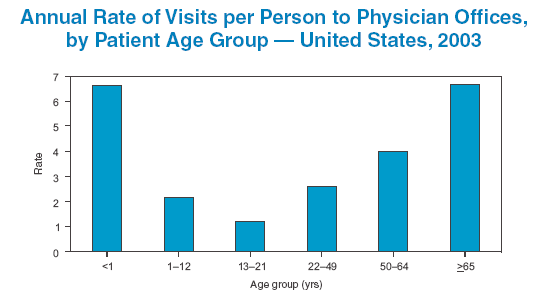I was prompted to think of ERs by a WSJ op-ed by Dr. Paul Auerbach. In it, he argues that non-emergency visits to the ER aren't going to stop, much as we might wish patients to do a better job of evaluating when they are actually suffering an "emergency." He notes the limited access to timely care from primary care physicians, and how it is not reasonable to expect people to make such rational evaluations when they or their loved ones are suffering.
As he says, "You can't teach patients economics lessons when they don't feel well."
Dr. Auerbach wants more resources to "make emergency departments more efficient," as well as to build primary care and specialty capacity. ERs certainly could be more efficient, but I suspect that simply adding more physician capacity won't really get at the underlying problems. I do agree that these non-emergency visits are likely to continue, and that the health care system has to accommodate them, rather than making patients accommodate to it.
The rise of urgent care centers and retail clinics should be helping decrease ER visits, but neither those nor more people having coverage seem to be denting ER visits, which nearly half of us make every year.
According to the CDC, 27% of ER visits only had a 15 minute wait to see a doctor, nurse practitioner, or physician assistant, but third waited over an hour. Only 12% of visits lasted under an hour; the plurality (35%) lasted 2-3 hours. To Dr. Auerbach's point, less than 12% of all visits were evaluated as actually being "immediate" or "emergent."
Promedica has teamed with Yelp to give ER statistics by hospital, such as average ER wait times and average time before being sent home, more available to consumers (see Promedica's tool), hoping they'll check it before rushing off to the local ER, but they should be mindful of what Dr. Becker said about when to give economics lessons.
Making this data available may not have the impact Promedica/Yelp hope. Digital design/strategy firm Huge did a "neuromarketing" study on what impact posting average wait times had on consumers. They found that proximity was still paramount, regardless of expected wait times, but that posting the wait times could positively impact the perceived brand image of a hospital, even if their average wait was longer than the national average. Indeed, some thought shorter wait times meant worse quality.
What ERs tend to have in common is that many people are shocked at the cost. A 2013 study found wide variability in ER charges for common conditions, with the median charge of $1,233 being 40% higher than the average American pays in monthly rent. And good luck trying to find out the costs in advance.
We're making it too hard for consumers. We give them all these options -- not just ERs but free-standing ERs, not just urgent care centers but also retail clinics, plus physician offices, outpatient clinics, telehealth, even telehealth kiosks -- but aren't as good about helping them know when to use which. Widely touted app iTriage has the right idea -- steering users to the right providers/facilities based on their symptoms -- yet its recommendations always seem to include ERs anyway.
Honestly, if you are clear when which patients should go to which option for what conditions, you're smarter than I am. You probably are anyway, but what worries me is that I'm not sure many providers know either, even when a single health system is offering the options.
Some ERs have created separate triage tracks with distinct pricing and waits for different levels of need. Others are using technology to accomplish that. Houston has launched ETHAN -- Emergency Tele-health and Navigation -- for its 911 EMTs. If EMTs believe a 911 caller doesn't actually have an emergency, the EMTs at the scene can do a video consult with an emergency physician, who can then steer the patient to other options if appropriate, such as at primary care clinics.
Similarly, Jefferson Hospital in Philadelphia uses their JeffConnect telehealth service to connect potential ER visitors to do a video consult with an ER doctor, expecting they can deter some visits. The service costs $49 per visit -- much cheaper than an ER visit would be.
These efforts are good starts, but they're just scratching the surface of what needs to be done. Ideally, what we need is something like this:
- A service -- web-based, app, and/or phone -- lets you explain your health issue, and uses algorithms/AI to help identify the suspected problems(s).
- Depending on what is wrong, it might automatically call 911, call Uber to get you to the ER with the shortest wait time/shortest distance/most expertise with your problem, or connect you to a physician via video consult for further evaluation.
- If the problem is not truly an emergency, it can steer you to lower cost, shorter wait options, perhaps the next day, possibly making an appointment for you.
- The service would keep your health history, current prescriptions, and insurance information, then transmit those, your self-described symptoms and proposed diagnosis to whichever provider you are sent to, so you don't have to start all over again when you arrive.
None of that is beyond our current technological capabilities...so why doesn't such a service exist?
Patients are still going to end up in the "wrong" place, but we can help make that happen less often, and we can try to stop penalizing them -- through higher costs, longer waits, and unnecessary tests -- when they do. It's supposed to be patient-centered, not ER-centered, right?


